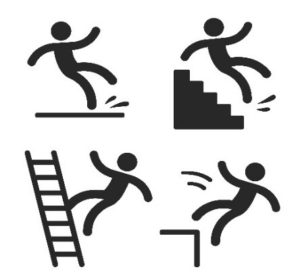We have all seen many of the alarming incidents occurring on construction sites in recent months.
Just this year, we have seen numerous construction cranes topple over on job sites and even a partial building/structure collapse, with disastrous and fatal results. This does not happen on every job that is taking place, so why did it happen on these ones? Shortcuts were potentially taken, or established procedures and guidelines were not followed, for certain everyday tasks and processes.
Think about the job that you do every day; you probably feel pretty proud of the work that you put in and the product that you deliver, right? But are you able to deliver that type of quality work every time?
Why is that? Is the schedule tighter on this job than it was on the last one? Do you not have all of the right tools or materials to perform at your peak ability? Are you properly trained to do the job[s] that are expected of you? If you answered “No” to any of the above, then you are at risk of becoming just another workplace injury or fatality statistic, and we have to put a stop to it. See below for some alarming statistics.
-According to OSHA & BLS (Borough of Labor Statistics)
Worker injuries, illnesses, and fatalities
5,147 workers died on the job in 2017 (3.5 per 100,000 full-time equivalent workers) — on average, more than 99 a week or more than 14 deaths every day.
Are we willing to accept this as a reality in our own workplace? Is it okay that this is happening all around us; putting us or someone else on our crew at risk of going to the hospital or, perhaps, not going home on any given day? I hope the answer is “Hell No!”
Construction’s “Fatal Four”
Out of 4,674 worker fatalities in private industry in the calendar year 2017, 971 or 20.7% were in construction — that is, one in five worker deaths that year were in construction. The leading causes of private sector worker deaths (excluding highway collisions) in the construction industry were falls, followed by struck by an object, electrocution, and caught-in/between. These “Fatal Four” were responsible for more than half (59.9%) the construction worker deaths in 2017, BLS reports.
Eliminating the Fatal Four would save 582 workers’ lives in America every year.
Falls – 381 out of 971 total deaths in construction in CY 2017 (39.2%)
Struck by Object – 80 (8.2%)
Electrocutions – 71 (7.3%)
Caught-in/between* – 50 (5.1%)
(*This category includes construction workers killed when caught-in or compressed by equipment or objects, and struck, caught, or crushed in collapsing structure, equipment, or material)
So, how are these incidents occurring on the job? Are we being asked to do a job that we have not been trained to do…or one that we do not have the correct tools or materials to perform? Are we being pushed by a schedule or deadline that has to be met and safety protocols are overlooked?
As employers and employees, we need to open our eyes, and our mouths, to take a stand! Do not accept the conditions if they are not safe to get the job done right.
For example, falls are the number one cause of worker injury and fatalities on the job, there is no excuse for it. We have the knowledge and technology to prevent these things from occurring. If you don’t have the correct ladder to access your work, take the time to get the right one – don’t risk setting up an A-Frame/step ladder against a wall, when an extension ladder would be better suited. If working from an extension ladder, don’t chance overreaching from your current position on that ladder to avoid going down to the ground to re-position it. Five or ten minutes of preparation/planning, layout, and gathering of the right equipment will prevent hours, days, weeks of downtime or worse, a life that cannot be replaced because we didn’t make the right choice of ladder.
How silly is it, to suffer these consequences when we just had to take a few minutes to get the right equipment in place?
Sometimes, it may just come down to the fact that we just didn’t know that we were doing it wrong. This is often a hard fact to admit. Everyone has their pride and does not want to openly admit they don’t understand the task or know how to do something. Is that small chance of temporary embarrassment, worth a lifetime of regret for getting yourself, or someone else, killed or permanently injured on the job?
If you don’t know how to do something, you need to admit this first to yourself and then to the person asking you to do the task. There is no shame in needing to learn something. Not one person is born knowing how to do a job; how did we learn to ride a bicycle? We had training wheels first, right? The key word here – TRAINING. Someone or something had to show us how it was done. It might not have been pretty at first, but after wobbling down the sidewalk a couple of dozen times, we got the hang of it and rode on two wheels all by ourselves. The same principles apply in the workplace. We need the knowledge of how to perform our job to the best of our abilities, and in the safest way possible to ensure we can make it home each night and back again for another day.
Through training, we can become empowered on the correct way to perform our work and what potential hazards to be on the lookout for. There are always “snakes hiding in the grass” and the more prepared we are the better choices we can make. Always ask yourself, “Am I confident in what I am doing?” If not, do not hesitate to ask questions. Your employer is responsible for ensuring that you are properly trained for all of the tasks that you perform for them.
Speak up and request that you be trained today to continue towards a safer tomorrow.
Joe Toth, Senior Inspector








